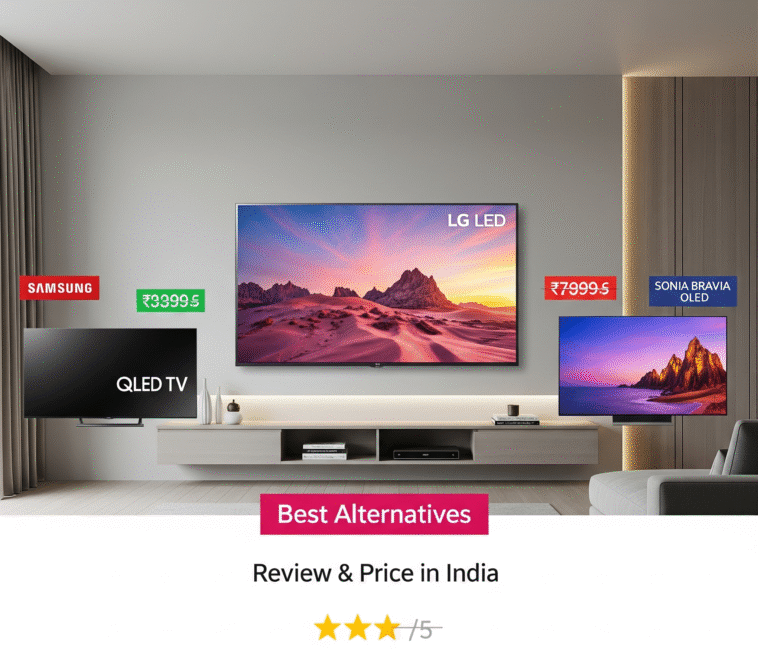Looking for the best LG LED TV in India? Compare LG LED TV price, features, and reviews with top LG LED TV alternatives like Samsung, Sony, Xiaomi, OnePlus, TCL, and Vu. Discover real Reddit user insights and FAQs to help you choose the right TV for your home in 2025.
What is an LG LED TV?
An LG LED TV is an LCD television from LG that uses LED backlighting. In India, common lines include LG UR, UQ, UP (4K UHD LED), NanoCell (quantum-dot-like color layer on IPS LCD), and QNED (mini-LED backlight + NanoCell color). These are distinct from LG’s OLED models (C-series, G-series), which use self-lit pixels. If you’re shopping by “LG LED TV price”, you’ll mostly be comparing UR/UQ/UP, NanoCell, and QNED models against other brands’ LED/QLED sets.
Key traits most buyers notice:
- WebOS smart platform with major OTT apps
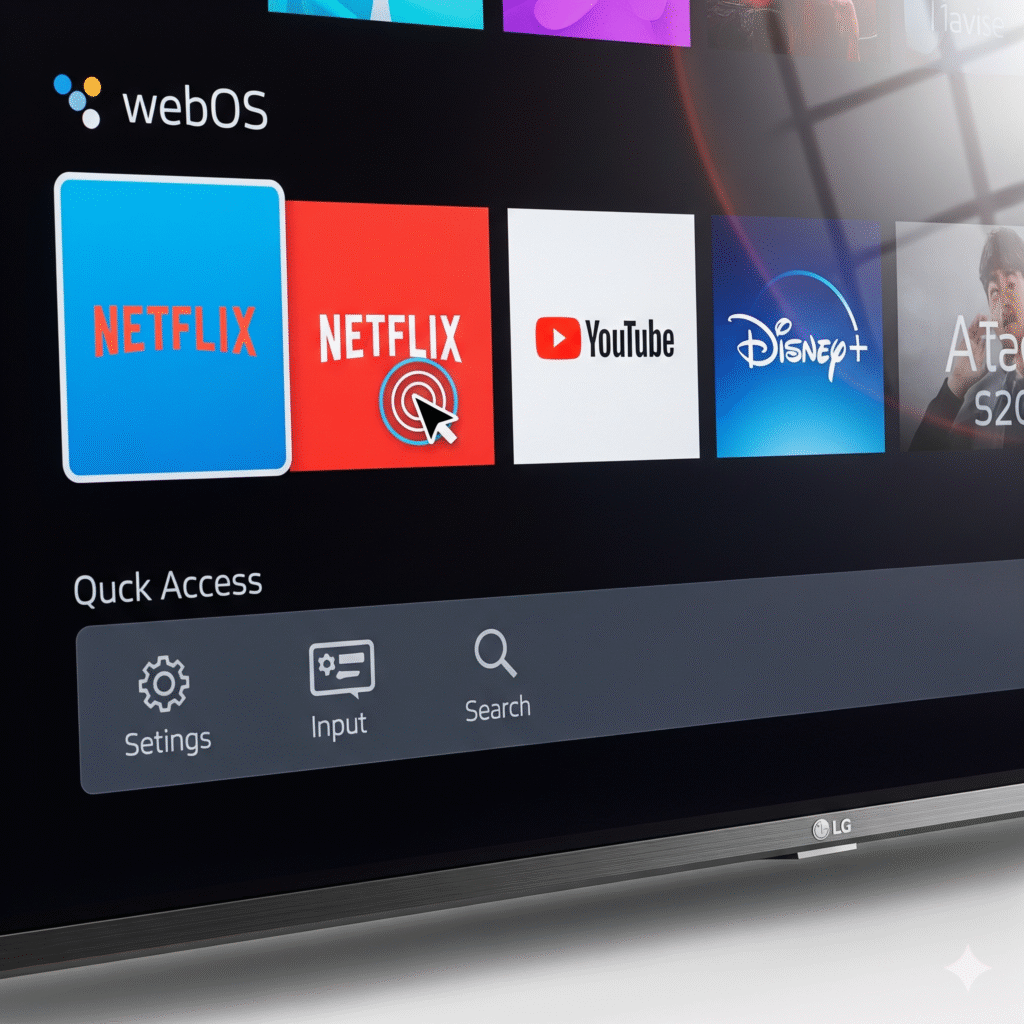
- Good out-of-the-box color accuracy for casual viewing
- Wide model spread from budget 32″/43″ up to 65″+ with options like 120 Hz, ALLM/VRR in higher lines
Who is an LG LED TV for?
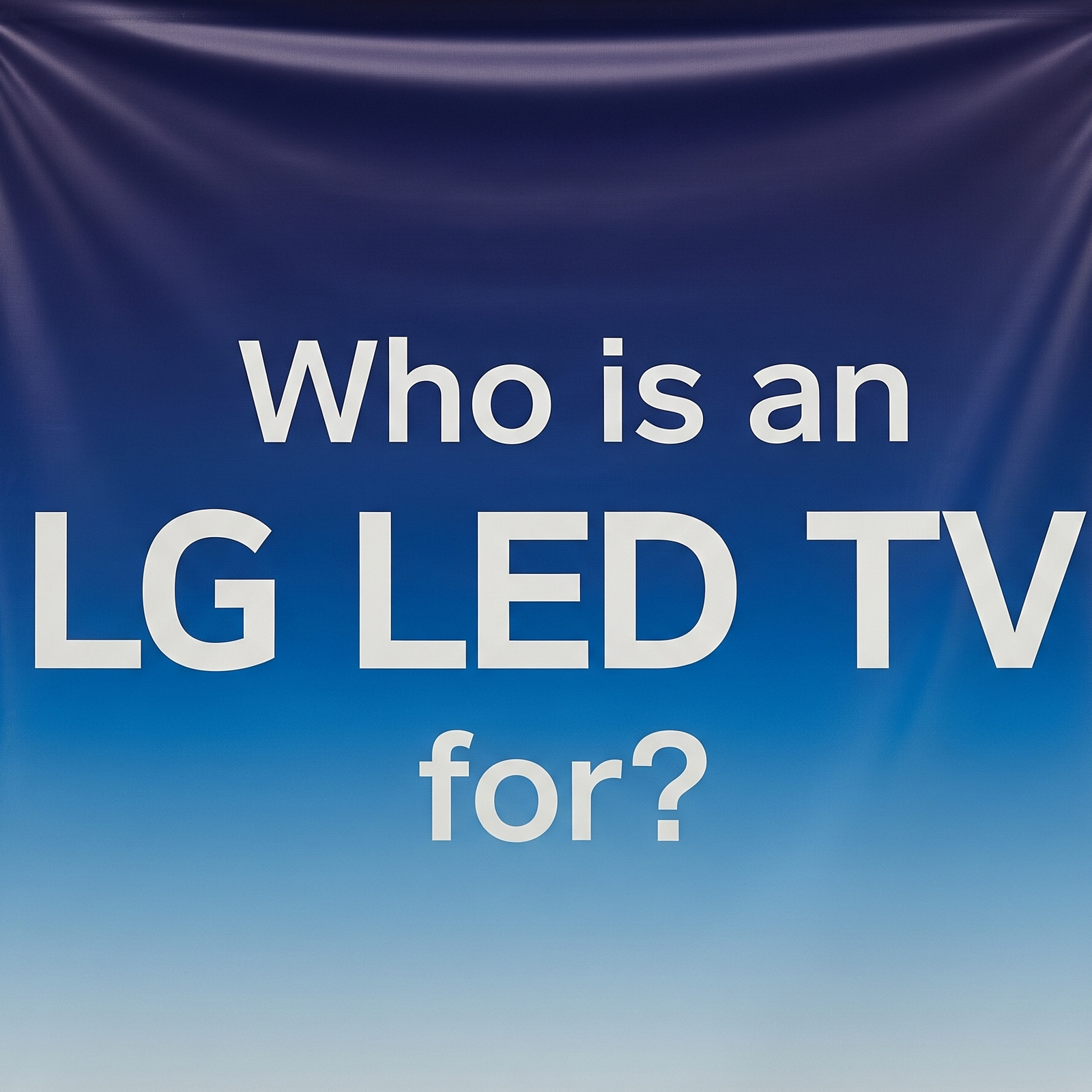
- Family rooms & wide seating: Many LG LED sets utilize IPS panels (varying by size/series), which typically provide wider viewing angles—handy when sofas are spread out.
- Casual streamers: If your mix is Netflix/Hotstar/Prime and DTH, WebOS is easy to live with.
- Bright rooms: LED backlights handle sunlit living rooms better than basic OLEDs, and models with anti-reflection coatings help further.
- Value buyers stepping up from FHD: The UR/UQ/UP series offers accessible large LED TV price points for 43–55-inch 4K.
Why an LG LED TV is better than many (for typical Indian use)
- Friendly software: WebOS is intuitive and responsive on mid/high trims; voice control is well integrated.
- Good motion & upscaling in class: While Sony often leads in motion processing, LG’s recent α-series processors do a solid job for sports and SD/HD cable.
- Wide model choice: From budget 43-inch to mini-LED QNED with 120 Hz and VRR for gaming, there’s an LG LED TV for most budgets.
- After-sales footprint: LG’s service network is strong across Indian metros and Tier-2 cities—important beyond the spec sheet.
LG LED TV Price Range in India
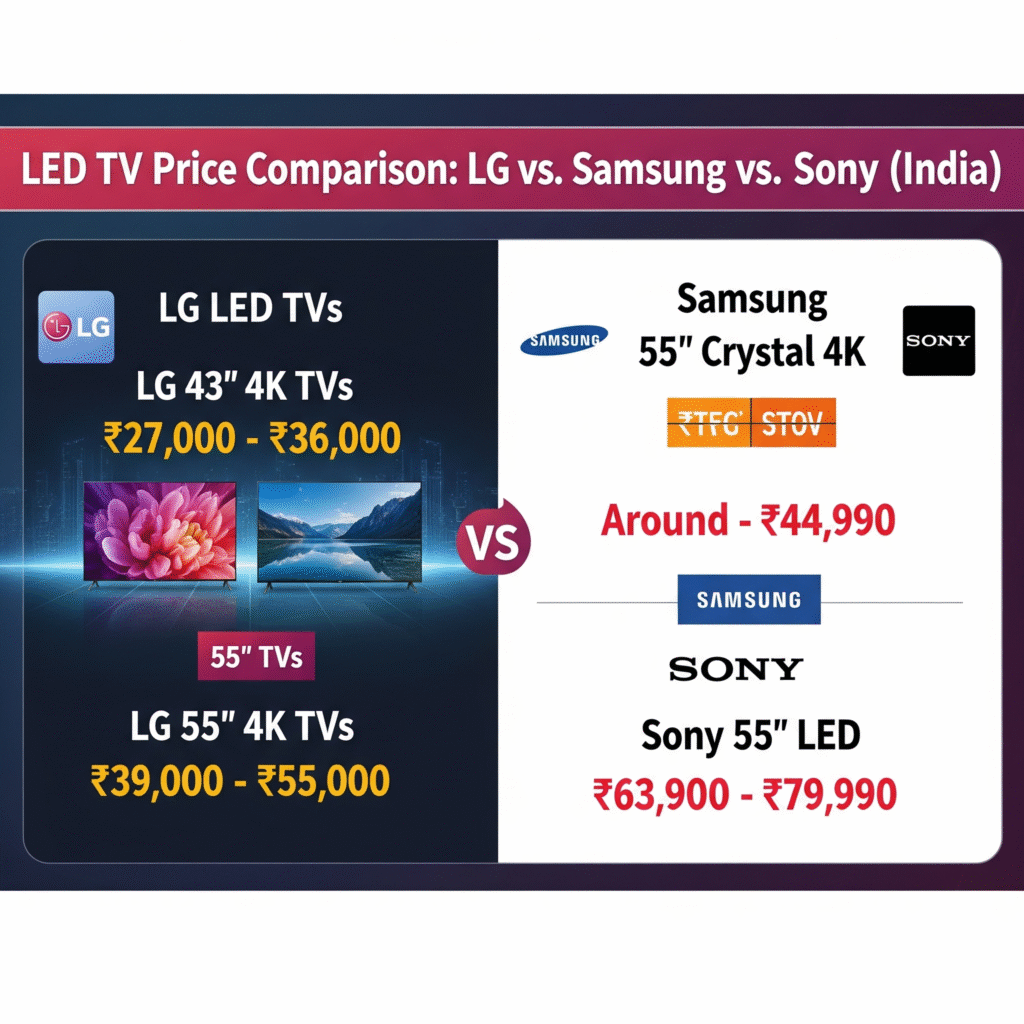
- 43″ 4K LG UR/UQ series: commonly in the ₹27,000–₹36,000 band, depending onthe sale season.
- 55″ 4K LG UR/UQ series: live prices often fall around ₹39,000–₹55,000 for mainstream LED (e.g., Amazon shows LG 55UR7500PSC around ₹39,990), with QNED MINI-LED models priced higher.
- Premium 55″ Sony/Samsung reference points (to calibrate market): Samsung Crystal 4K 55″ frequently lists around ₹44,990 on Flipkart; Sony 55″ LED can sit around ₹63,900–₹79,990 depending on series and offers.
Prices fluctuate by festival sales, card/EMI offers, and exchange. Always check the exact model code.
What are the best LG LED TV alternatives (and why consider them)?
Also, see: Dell or HP: Which is Better?
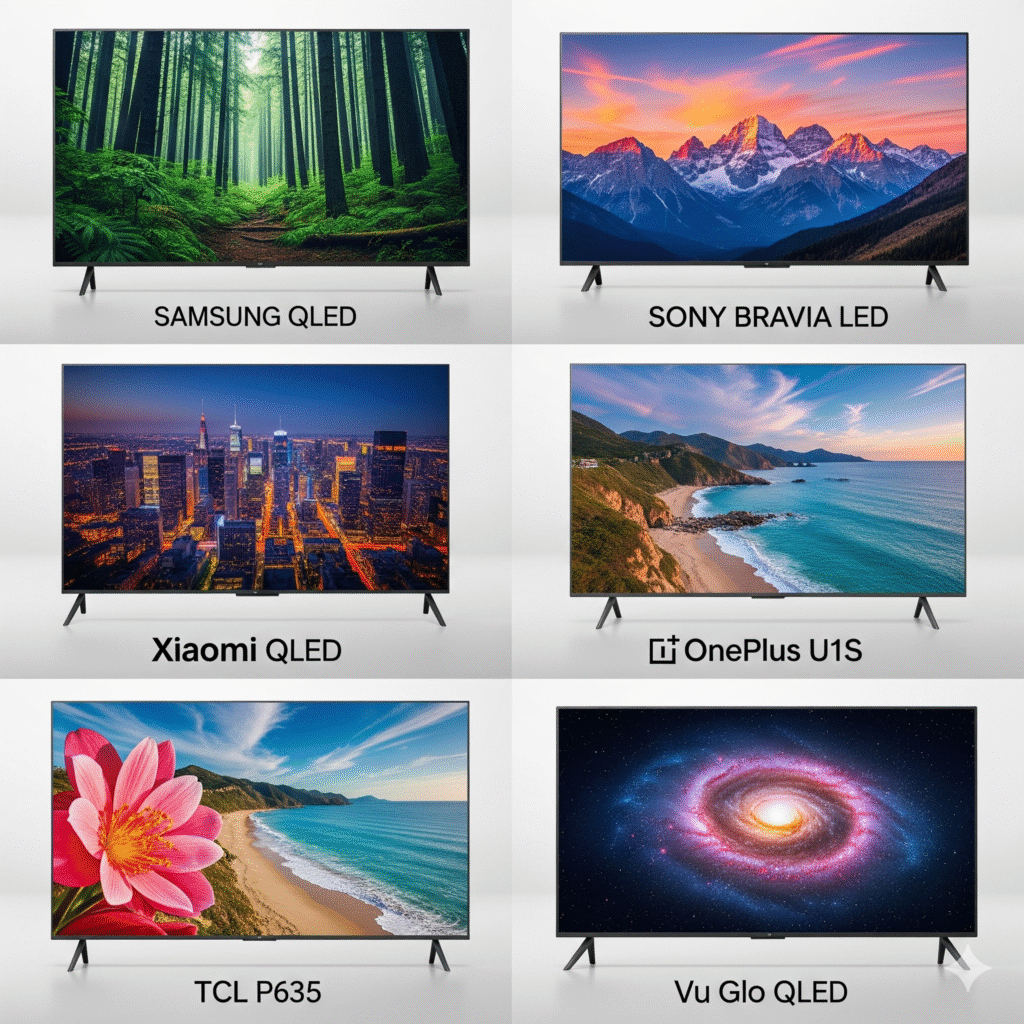
When searching lg led tv alternatives, Indian shoppers usually look at Samsung (QLED/Crystal UHD), Sony Bravia LED, Xiaomi (QLED/FX series), OnePlus U-series, TCL (P/ C / QD-Mini LED), and Vu Glo QLED.
- Samsung (Crystal UHD / QLED) – Strong VA-panel contrast, bright HDR, huge India lineup. Great for movies in dim rooms.
- Sony Bravia LED – Best-in-class motion and upscaling for sports/TV. Pricing is higher, but picture processing is the draw; recent India launches keep the lineup fresh.
- Xiaomi QLED / FX / FX Pro – Aggressive pricing with QLED panels and Fire OS/Google TV; the 55-inch QLED FX Pro hovers around ₹39,999. Great value alternative to the LG LED TV.
- OnePlus U-Series – Clean Android TV experience, competitive product + price; the 55-inch U1S often appears around ₹35k–₹53k depending on stock cycles.
- TCL P635 / C-series – Budget-friendly 55-inch options often dip below ₹30k during sales, yet with Google TV. Good bang-for-buck LG LED TV alternatives.
- Vu Glo QLED – India-centric brand with QLED at sharp pricing (55″ frequently ₹35,990–₹42,990); Dolby Vision/Atmos features stand out at the price.
LG LED TV vs Samsung (LED to LED/QLED)
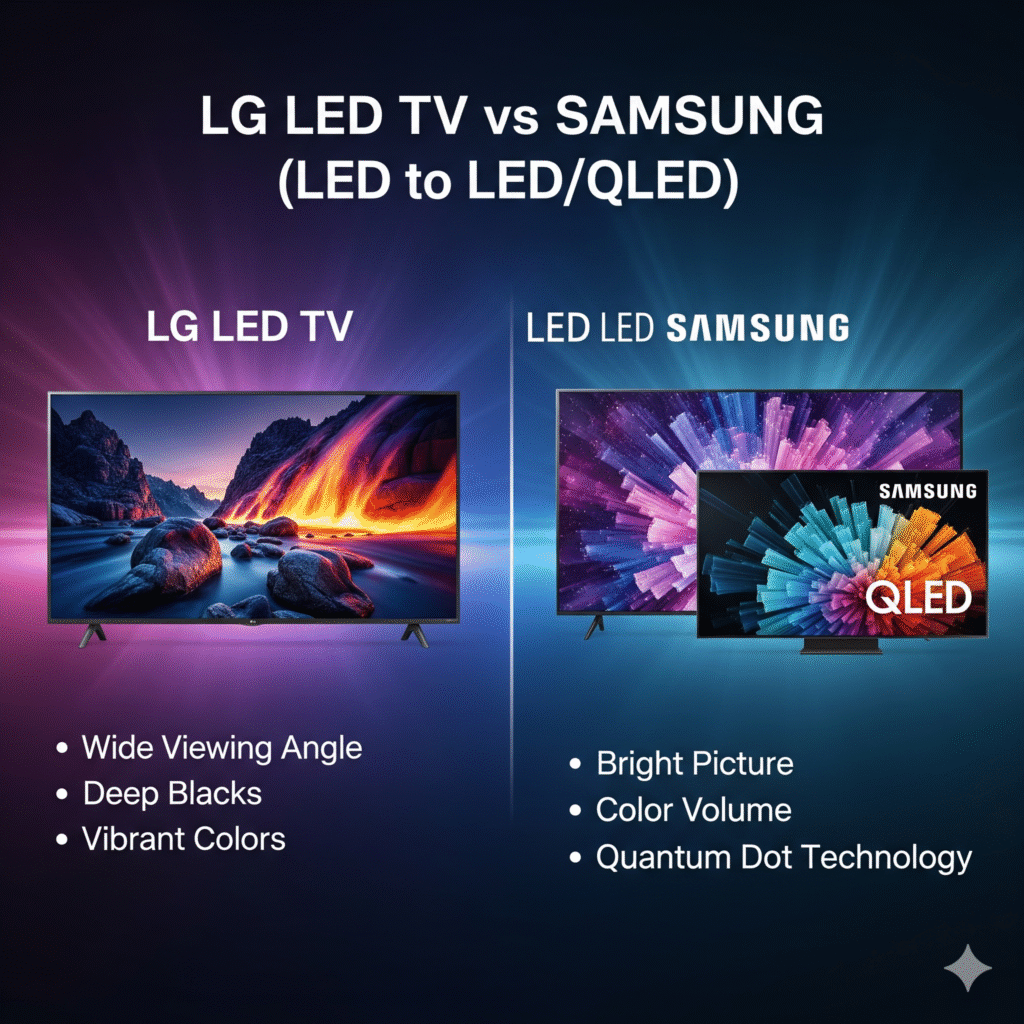
Verdict in brief: If you watch lots of movies/sports in a dim room and care about deep blacks and punchy contrast, Samsung’s VA-based sets (Crystal/QLED) usually edge out LG LED TV IPS-based models. For wider seating and off-axis viewing, an LG LED TV can be more forgiving. LG LED TV price is often a tad lower model-to-model, while Samsung’s mid-range QLED adds brightness and color volume.
Comparison
| LG LED TV | Samsung LED/QLED |
|---|---|
| Often IPS (wider angles, lower native contrast) | Mostly VA (higher contrast, better blacks) |
| WebOS is simple & stable | Tizen OS is feature-rich; some users find it heavier |
| Strong value in UR/UQ lines | QLED options bring higher brightness & color |
| lg led tv review: great for wide seating, casual OTT | Samsung review: great for movies/HDR pop |
Learn More (LG TV)
Learn More (Samsung TV)
LG LED TV vs Sony Bravia LED

Verdict in brief: Sony tends to win for upscaling/motion—fast sports and DTH look superb. LG LED TV undercuts on product + price and offers friendlier UI. If your family watches a lot of SD/HD channels and you’re picky about motion handling, Sony is a strong LG LED TV alternative; if you want a lower ticket and wider seating angles, LG is compelling.
Comparison
| LG LED TV | Sony Bravia LED |
|---|---|
| Value-first pricing; WebOS | Premium pricing; class-leading motion & upscaling |
| IPS on many sizes; wide angles | VA on many models; deeper blacks |
| Good for OTT + general use | Great for sports/DTH purists |
Learn More (LG TV)
Learn More (Sony TV)
LG LED TV vs Xiaomi QLED / FX Pro
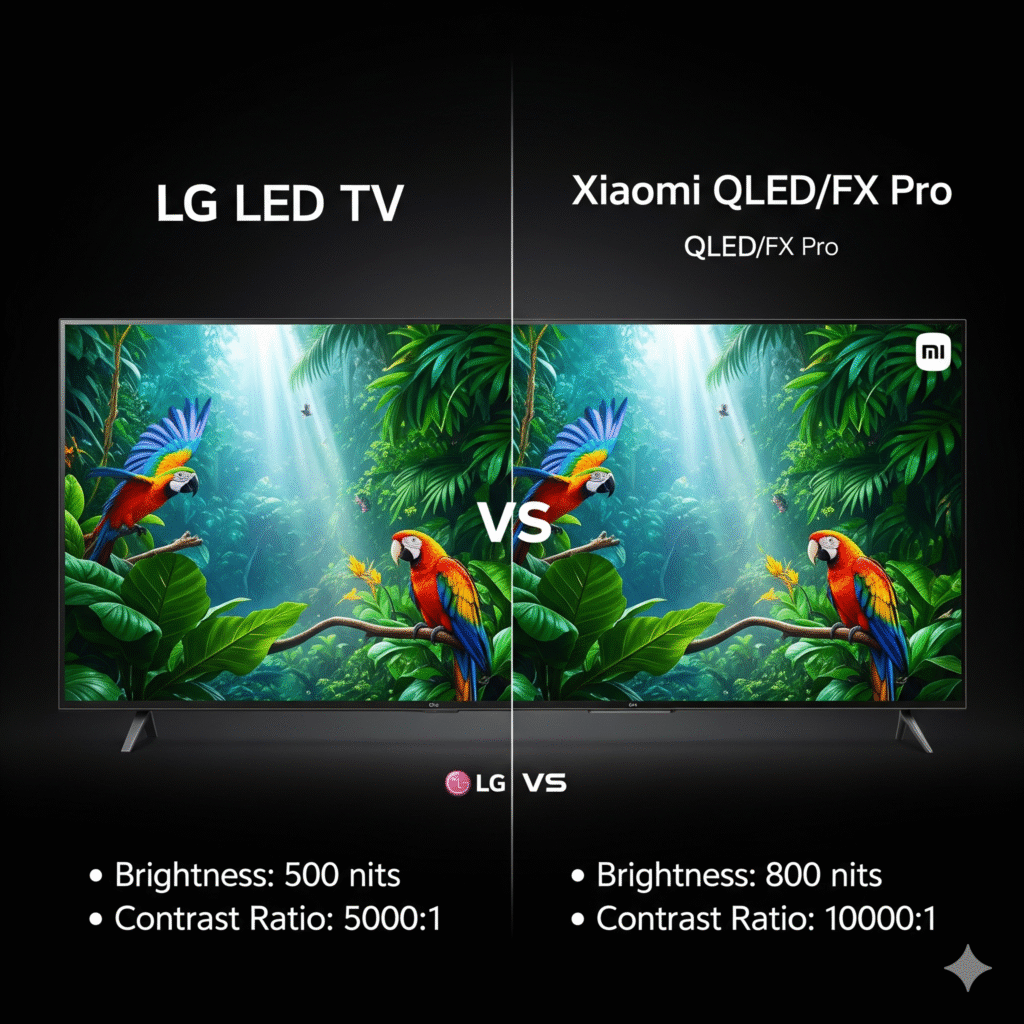
Verdict in brief: Xiaomi’s 55-inch QLED product + price is very aggressive (around ₹39,999) and competes directly with LG’s UR/UQ LED on color brightness and features (Fire OS / Google TV). If you want maximum features per rupee, Xiaomi is a top LG LED TV alternative; if you prefer LG’s service network, WebOS polish, and wide seating comfort, LG LED TV still makes sense.
Comparison
| LG LED TV | Xiaomi QLED / FX Pro |
|---|---|
| IPS-leaning sets; familiar LG ecosystem | QLED color pop; Fire OS/Google TV |
| Broader service footprint | product + price leader around ₹39,999 |
| lg led tv review: consistent, easy UI | Xiaomi review: feature-rich at budget |
Learn More (LG TV)
Learn More (Xiaomi QLED TV)
LG LED TV vs OnePlus U-Series
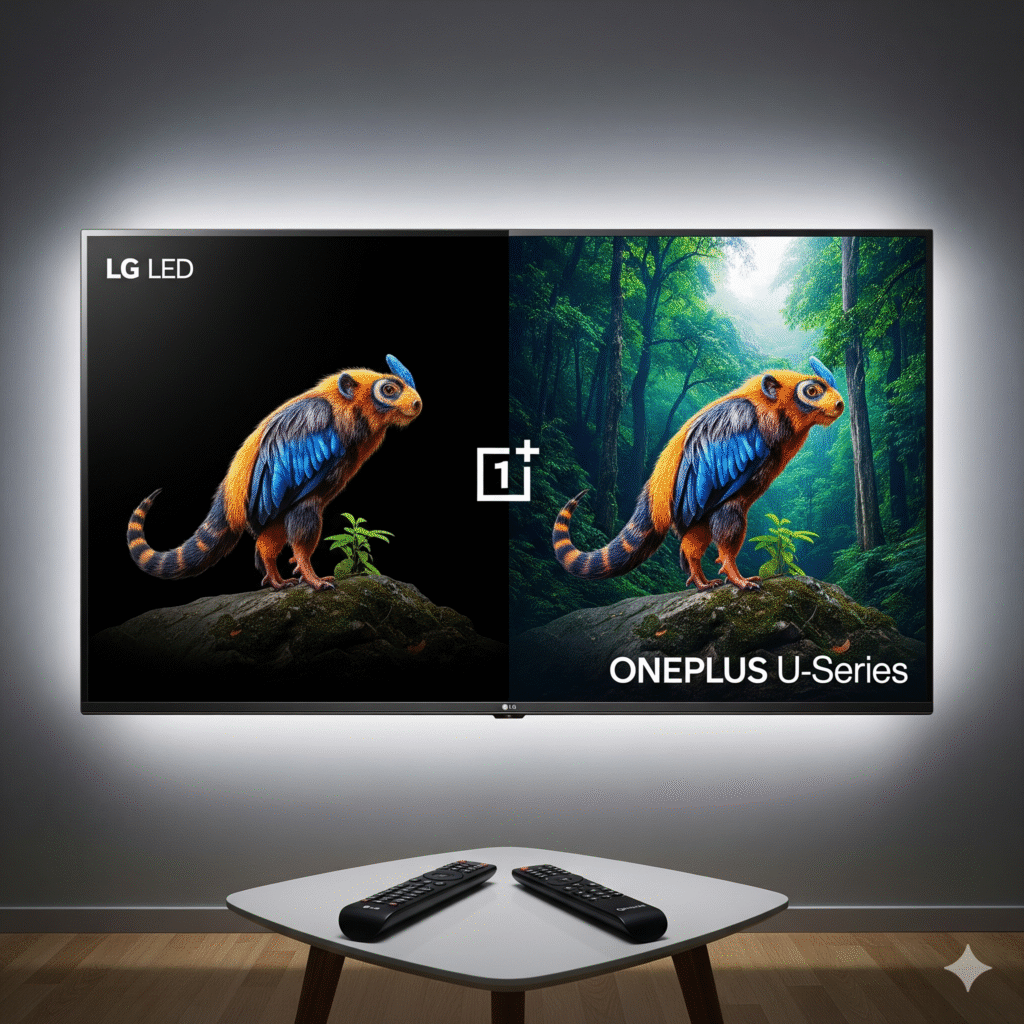
Verdict in brief: OnePlus U1S is a clean Android TV with competitive street prices (mid-₹30k–₹50k). Picture quality is similar class to LG’s UR/UQ LED; choice comes down to WebOS vs Android TV, remote/UX preference, and the best deal you find.
Comparison
| LG LED TV | OnePlus U-Series (U1S/U1) |
|---|---|
| WebOS; Magic Remote on some trims | Android TV; OnePlus Connect perks |
| Often slightly higher MRP but large discounts | Often aggressive sale pricing; Dynaudio-tuned audio on U1S |
| lg led tv alternatives pick if you love Android | Stick with LG if you want WebOS simplicity |
Learn More (LG TV)
Learn More (OnePlus U-Series TV)
LG LED TV vs TCL (P/C-series) and Vu Glo QLED
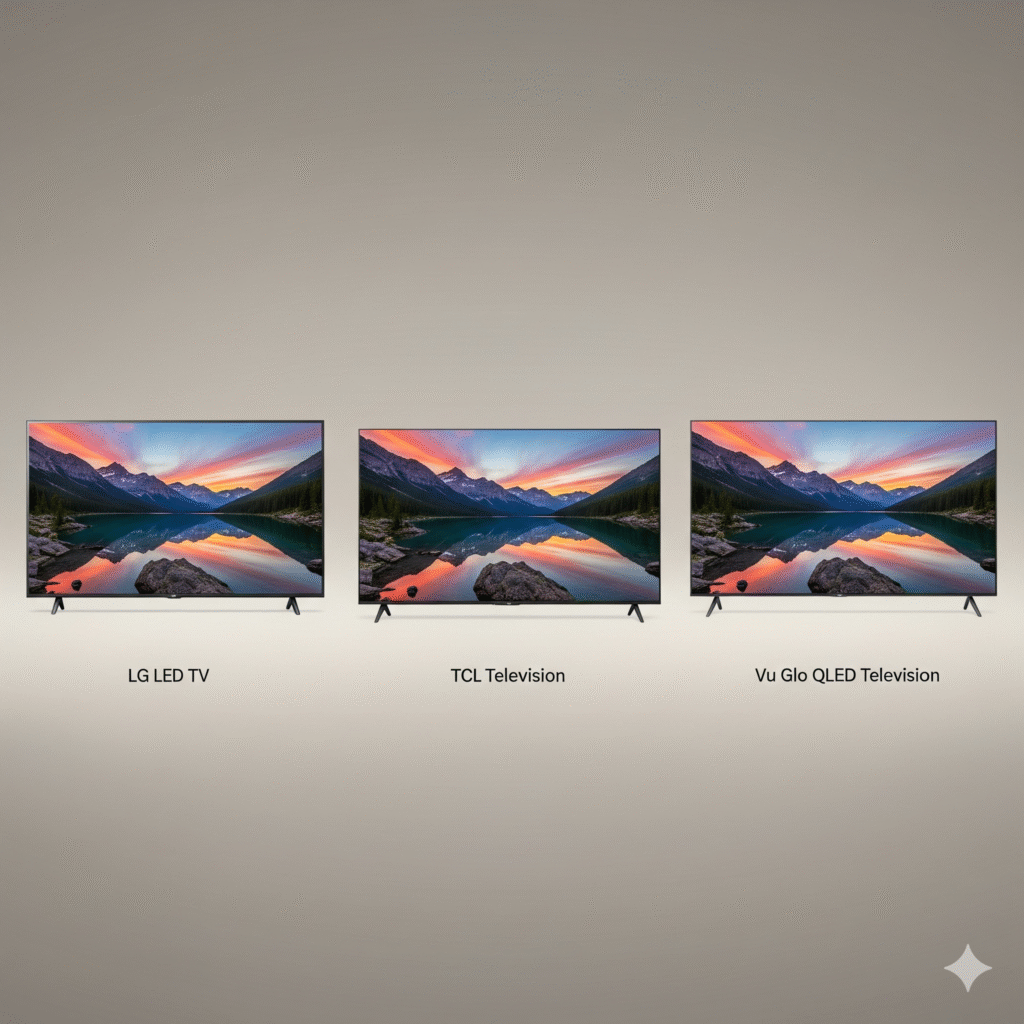
Verdict in brief: TCL and Vu deliver feature density at very low prices. TCL P635 55″ dipping to ~₹27,999 during sales is hard to ignore; Vu Glo QLED brings Dolby Vision/Atmos polish around ₹35,990–₹42,990. If absolute product + price matters most, these are potent LG LED TV alternatives; if you want steadier software refinement and broad service reach, LG is safer.
Comparison
| LG LED TV | TCL / Vu Glo QLED |
|---|---|
| Higher baseline polish; wide service network | Maximum specs per rupee; frequent sale dips |
| WebOS; smooth app ecosystem | Google TV; QLED punch in mid-₹30k range |
| WebOS: smooth app ecosystem | TCL/Vu review: value kings; QC can vary by batch |
Learn More (LG TV)
Learn More (TCL / Vu Glo QLED)
Hands-on insights from Reddit: What’s the LG LED TV Reddit verdict?
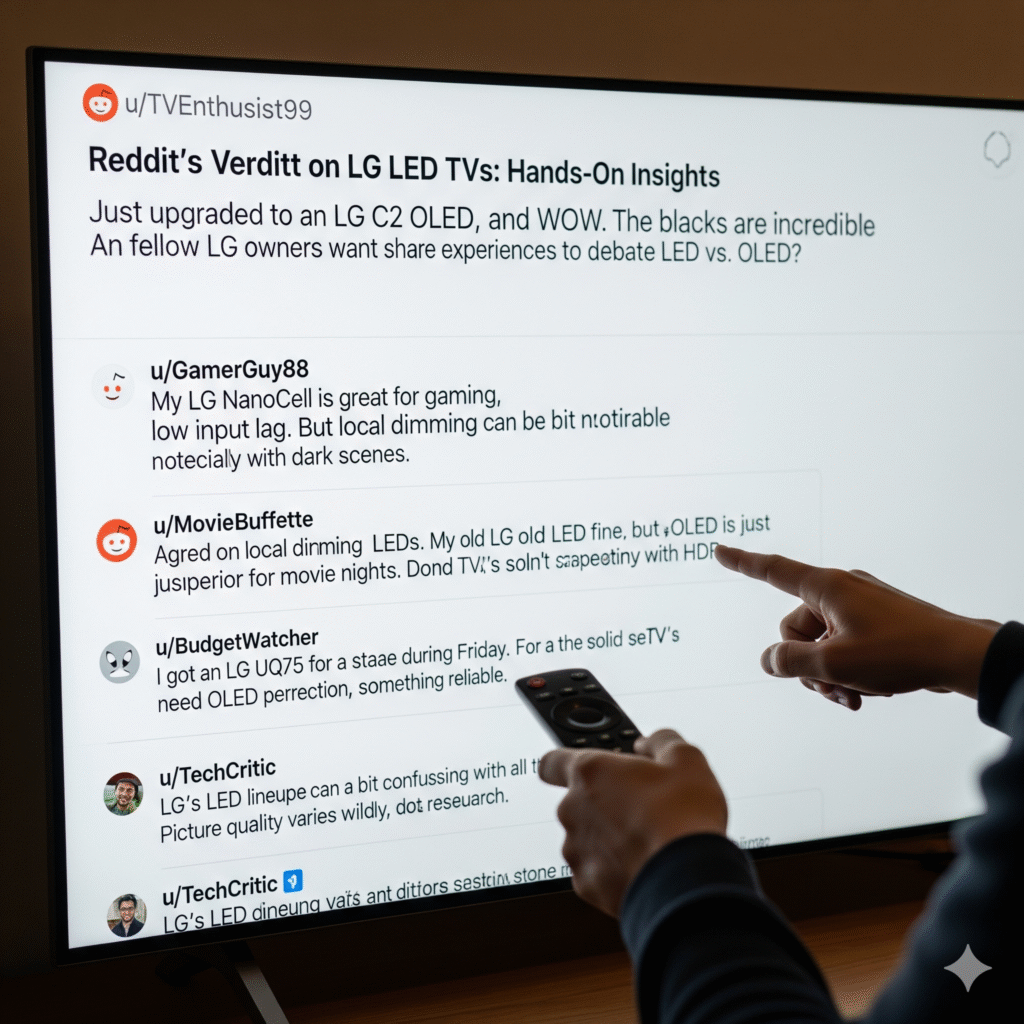
We synthesized recent lg led tv reddit chatter (r/4kTV, r/hometheater, r/india, r/LGTVOwners, r/ps5india):
1) IPS vs VA panel reality check
- Multiple threads note that many LG LED/LCD models use IPS panels (with exceptions—e.g., some 50-inch variants use VA). IPS brings wider viewing angles but lower native contrast; VA (common on Samsung/Sony LEDs) yields deeper blacks—better for dark-room movie watching.
2) NanoCell/QNED vs Samsung QLED
- Enthusiast consensus often favors Samsung QLED (VA + local dimming) over LG NanoCell/QNED (IPS + mini-LED) for black depth and HDR punch, while acknowledging LG’s better off-axis tolerance.
3) Brand perception
- Some redditors assert “LG is best at OLED; Samsung/Sony are stronger on LED/QLED,” though many still consider LG’s LED TV a good value with solid software.
4) India-specific experiences
- India threads often recommend TCL/Vu/Xiaomi for value, LG/Samsung for long-term reliability/service; a few posts complain about service incidents (as with any brand).
Reddit outcome / ultimate verdict
- If you’re buying LED (not OLED) and watch a lot in dim rooms, Samsung/Sony LED frequently tests better for contrast/HDR.
- If your living room has wide seating and mixed lighting, or you want WebOS + stable, simple UX, an LG LED TV is a smart, low-stress pick—especially when you find a sharp LG LED TV price on UR/UQ lines.
- For the best rupee-for-rupee package, Xiaomi/TCL/Vu are solid LG LED TV alternatives, but factor in panel type and after-sales in your city. (Bottom line: check panel type per size and compare a real-world demo before you decide.)
Popular FAQs about LG LED TV
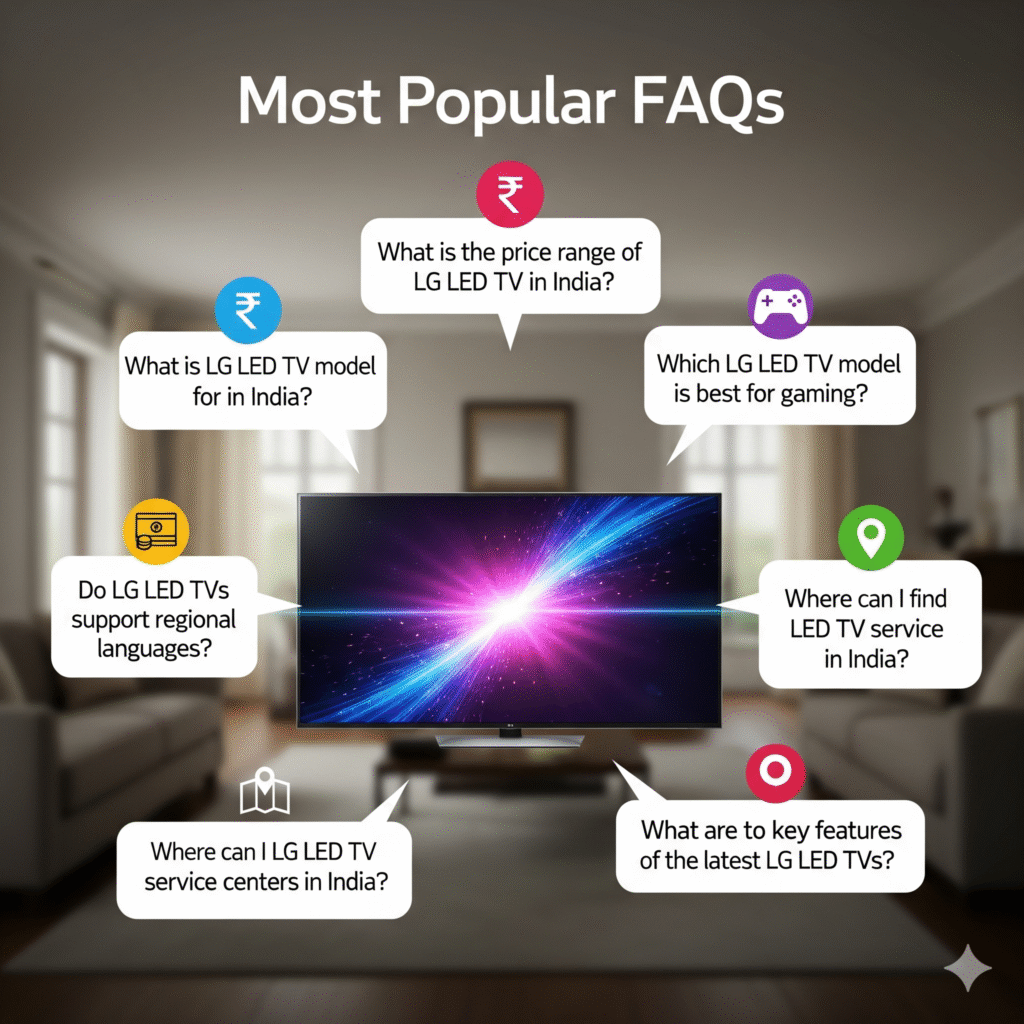
Q1. Is an LG LED TV good for dark-room movie nights?
LG LED TV review consensus: good, but know your panel. IPS-based LG LEDs have wider angles but shallower blacks than VA panels (often found on Samsung/Sony).
Q2. Which sizes use IPS vs VA in LG?
It varies by series and size; many 43–55″ LG LEDs are IPS, while some 50″ variants can be VA. Always check the exact model code/panel spec, or user reports.
Q3. What’s a good LG LED TV price for a 55-inch right now?
Street deals commonly float around ₹40k–₹50k for UR/UQ series; premium QNED mini-LED costs more. Example listing: LG 55UR7500PSC ~₹39,990. Compare with Samsung Crystal 4K 55″ ~₹44,990 and Sony 55″ entries ~₹63,900+.
Q4. WebOS vs Android TV (Xiaomi/OnePlus/TCL/Vu)?
WebOS is simple and consistent; Android/Google TV offers broader tinkering and app flexibility. It’s a UI preference call—try the remotes and app stores in person if you can.
Q5. Is the LG LED TV good for PS5/Xbox?
Yes for casual gaming; some QNEDs offer 120 Hz/VRR. If competitive gaming is a priority and budget allows, compare specs (HDMI 2.1 ports, VRR) between the LG LED TV and LG LED TV alternatives like Samsung QLED or Sony mid/high tiers.
Q6. NanoCell vs QNED vs Samsung QLED—what’s the difference?
- NanoCell: LG’s color-filter marketing on LED LCD (usually IPS).
- QNED: LG’s mini-LED backlight + NanoCell color—better local dimming, higher brightness.
- QLED (Samsung): Quantum-dot color on VA LCD; often higher native contrast. For pure HDR “pop,” QLED VA typically looks punchier; QNED wins for angles.
Q7. Is after-sales service reliable?
LG’s network is widespread in India. Still, as with any brand, experiences vary; check service center presence in your city and consider retailer-backed extended warranties.
Q8. What about LG LED TV Reddit concerns on panel lotteries?
Model and size can shift panel type (IPS vs VA). Verify the exact model’s panel before buying—ask the retailer, check reliable reviews, or community spreadsheets.
Checklist Before Buying an LED TV
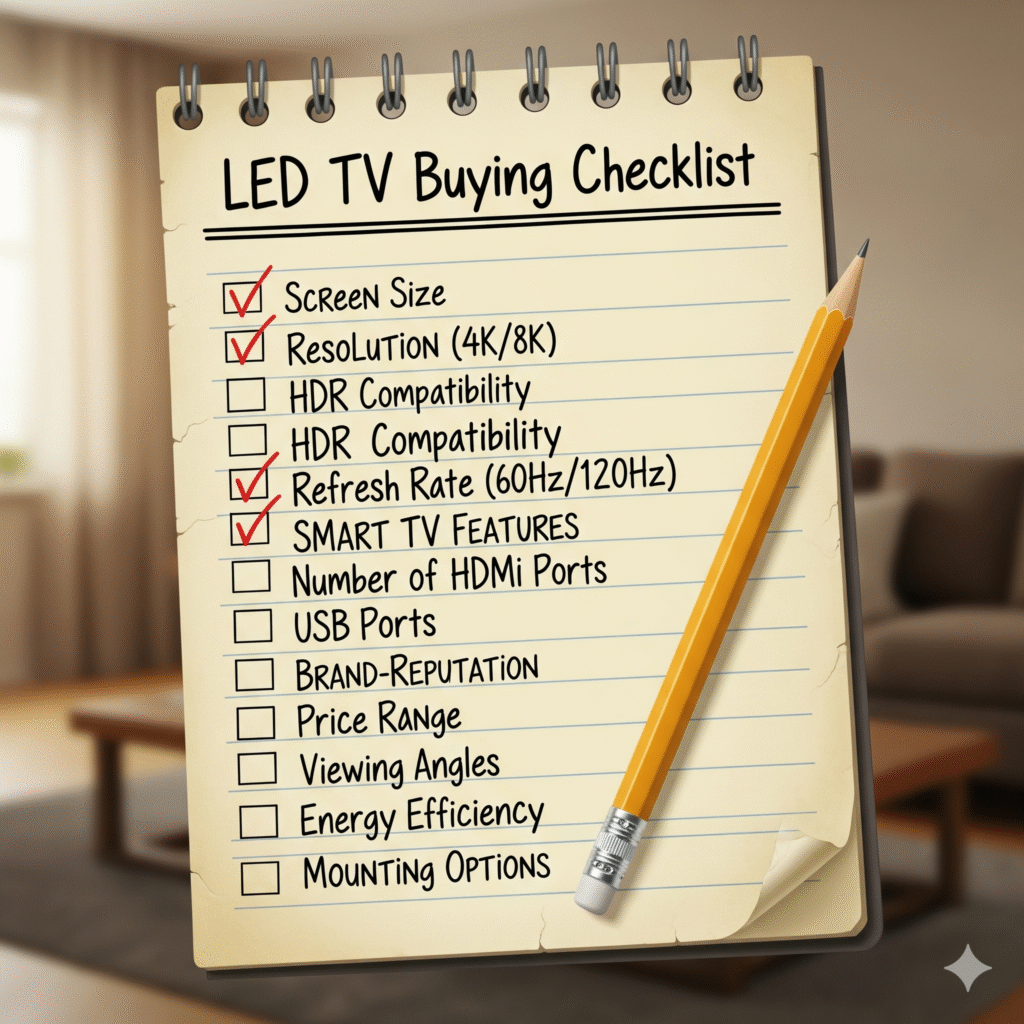
Use this quick list when comparing the LG LED TV vs alternative models:
- Room type: Bright room & wide seating → LG LED TV (IPS) makes sense. Dark theater room → compare Samsung QLED/Sony LED for deeper blacks.
- Panel & backlight: Confirm IPS vs VA; check if the TV has local dimming (mini-LED/QNED/QLED lines do better HDR).
- Smart platform: Prefer WebOS (LG) or Android/Google TV (Xiaomi/OnePlus/TCL/Vu)?
- Budget check (product + price):
- LG 55″ UR/UQ: often ~₹40k–₹50k; LG LED TV price sweet spot.
- Samsung Crystal 55″: ~₹45k sale; QLED higher.
- Sony 55″: ~₹64k–₹80k+ for stronger processing.
- Xiaomi QLED 55″: ~₹39,999; product + alternatives value star.
- TCL 55P635: sale lows ~₹27,999. Vu Glo QLED: ~₹35,990–₹42,990.
- Warranty/Service: Consider retailer extended plans if you keep TVs 5–7 years.
Quick one-to-one “product vs alternative” summaries
- LG LED TV vs Samsung: LG = angles + WebOS + pricing; Samsung = contrast + HDR oomph. (Try dark-room demos.)
- LG LED TV vs Sony: LG = value/UI; Sony = motion/upscaling king for sports/DTH.
- LG LED TV vs Xiaomi: LG = polish/service; Xiaomi = QLED features at product + price wins.
- LG LED TV vs OnePlus: WebOS vs Android; buy whichever UI you’ll actually enjoy daily.
- lg led tv vs TCL/Vu: LG = consistency/support; TCL/Vu = maximum specs per rupee.

